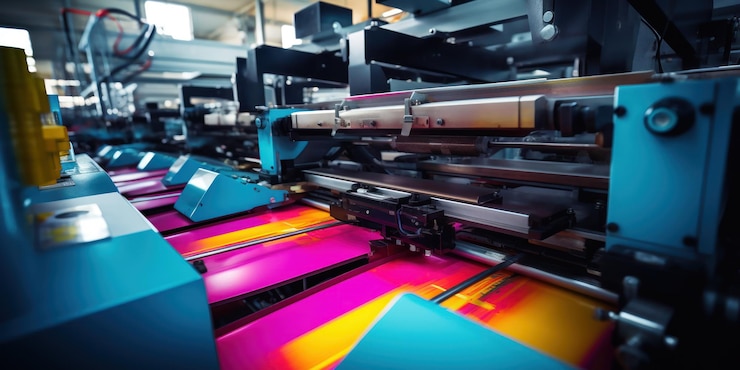In today’s rapidly evolving digital landscape, the concept of interactive printed materials is gaining remarkable traction. As technology advances, the traditional boundaries of print media are being redefined, offering a dynamic blend of physical and digital experiences. This evolution is not only captivating audiences but also revolutionizing how we think about print. In this article, we’ll delve into the world of interactive printed materials, exploring their significance, applications, and the exciting possibilities they bring to the table.

The Evolution of Print Media
The journey of print media from static to interactive has been a fascinating one. Traditional print, once confined to ink on paper, is now embracing digital enhancements that create a more engaging and immersive experience. The integration of technology into print media has opened up new avenues for creativity and communication.
For instance, the use of AI in printing is revolutionizing how materials are produced, ensuring more personalized and interactive experiences for the audience.
What Are Interactive Printed Materials?
Interactive printed materials refer to physical print products that incorporate digital elements to enhance user engagement. These materials often use technologies like QR codes, augmented reality (AR), and near-field communication (NFC) to bridge the gap between the physical and digital worlds. By doing so, they allow users to interact with the content in ways that were previously unimaginable.
Key Technologies Behind Interactive Print
Augmented Reality (AR)
AR is one of the most transformative technologies in the realm of interactive printed materials. By overlaying digital content onto physical surfaces, AR enhances the reader’s experience by providing additional information, animations, or interactive elements. This technology is being widely adopted in various sectors, from marketing and advertising to education and entertainment.
QR Codes
While QR codes have been around for some time, their integration into print media has significantly expanded the possibilities of interaction. By scanning a QR code, users can access additional content, videos, websites, and more, all seamlessly connected to the physical print.
Near-Field Communication (NFC)
NFC technology allows for a seamless connection between printed materials and digital content. By simply tapping their smartphone on an NFC-embedded print, users can access a wealth of information or interactive experiences without the need for additional apps.
Applications of Interactive Printed Materials
Marketing and Advertising
In the world of marketing, interactive printed materials offer a unique opportunity to engage consumers in innovative ways. Brands can create memorable campaigns by combining print with digital elements, enhancing brand awareness and customer engagement. For example, a simple flyer can become an interactive experience by incorporating AR or QR codes, leading customers to online content or exclusive promotions.
Education
Educational institutions are increasingly adopting interactive printed materials to create more engaging and immersive learning experiences. Textbooks and educational materials can come to life with AR, providing students with interactive diagrams, videos, and quizzes that enhance comprehension and retention.
Publishing
Publishers are using interactive printed materials to breathe new life into traditional books and magazines. By incorporating digital elements, readers can access additional content, videos, and author insights, making reading a more dynamic and enriching experience.
Advantages of Interactive Printed Materials
The benefits of interactive printed materials are manifold. They offer a unique way to capture and retain the audience’s attention, creating memorable experiences that stand out in a crowded digital landscape. By combining the tactile nature of print with the interactivity of digital, these materials offer a more holistic and engaging user experience.
Enhanced Engagement
Interactive print captures the reader’s attention in a way traditional print cannot. The novelty of interacting with digital elements keeps users engaged and encourages them to explore more.
Measurable Impact
Unlike traditional print, interactive printed materials offer the ability to track and measure user engagement. Marketers can analyze data such as the number of interactions, time spent on content, and conversion rates, providing valuable insights into campaign effectiveness.
Cost-Effectiveness
While the initial investment in creating interactive printed materials may be higher, the long-term benefits often outweigh the costs. The ability to update digital content without reprinting materials saves both time and resources.
Challenges and Considerations
Despite the numerous advantages, there are challenges associated with implementing interactive printed materials. Ensuring accessibility for all users, maintaining data privacy, and creating seamless user experiences are key considerations that need to be addressed.
Accessibility
Ensuring that interactive printed materials are accessible to all users, including those with disabilities, is crucial. Designing user-friendly interfaces and providing alternative ways to access digital content are essential to inclusivity.
Data Privacy
As with any digital technology, data privacy is a significant concern. It’s important to ensure that user data collected through interactive printed materials is handled securely and transparently.
The Future of Interactive Print
The future of interactive printed materials looks promising. As technology continues to advance, we can expect even more innovative and immersive experiences. The integration of AI, machine learning, and IoT (Internet of Things) into print media will likely open up new possibilities for personalization and user engagement.
For a deeper understanding of the future of commercial printing, you can explore this ResearchGate article.
Conclusion
Interactive printed materials are transforming the way we perceive and engage with print media. By merging the physical and digital worlds, they offer exciting opportunities for creativity, communication, and engagement. As we move forward, embracing these technologies will be key to staying relevant in a digital-first world.

FAQs
What are interactive printed materials?
Interactive printed materials are print products that incorporate digital elements like QR codes, AR, and NFC to enhance user engagement.
How do interactive printed materials benefit marketers?
They offer unique ways to engage consumers, enhance brand awareness, and provide measurable insights into campaign effectiveness.
What technologies are used in interactive print?
Key technologies include augmented reality (AR), QR codes, and near-field communication (NFC).
This article contains affiliate links. We may earn a commission at no extra cost to you.






